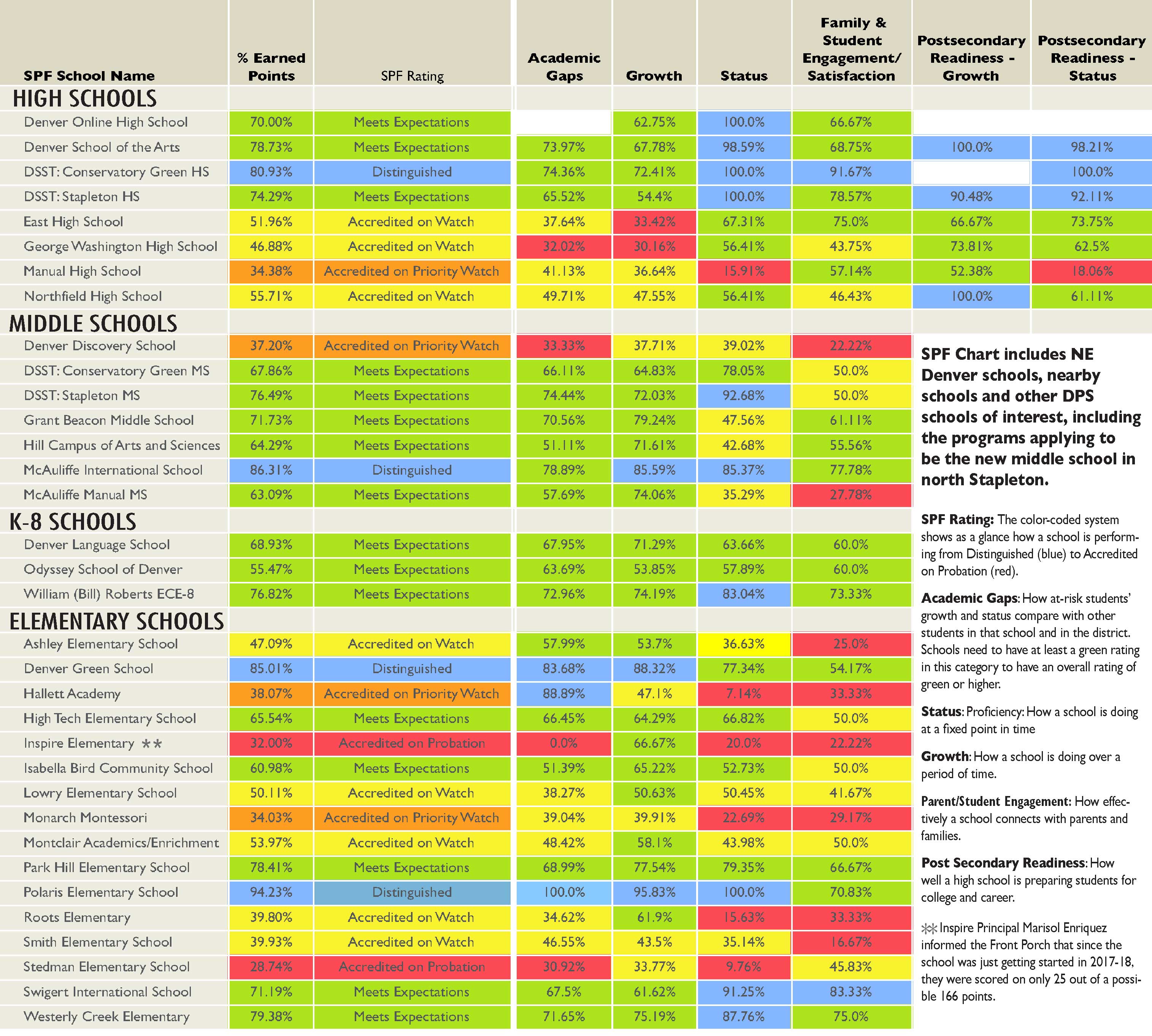
NOTE: Ashley “Status” was initially color coded incorrectly as red. It should have been yellow as shown here.
The high interest in the annual unveiling of School Performance Framework (SPF) scores and the bright colors that draw attention to the rankings may tempt parents to draw conclusions about their child’s school beyond what the data is designed for. The district’s decision to use the SPF to call out academic gaps does a good job of highlighting a problem and creating a system to help solve the problem, says Board Representative Jennifer Bacon. But, she adds, the SPF doesn’t measure programs to find the best fit for your child.
“Families should use multiple data points to understand their school or future schools, and the SPF is only one of those data points,” says Nicole Veltzé, DPS Assistant Superintendent for Secondary Education. “Parents should take a walk through their school to assess the climate and culture of the building that may not be captured in an SPF. Talking to other families about their students’ experiences in the school is another important aspect of understanding a school.”
Each DPS school has survey data that offers additional information about six Whole Child components: Challenged, Engaged, Healthy, Safe, Socially-Emotionally Intelligent and Supported. Students are asked whether they eat breakfast or get bullied, and the data shows chronic absences and out-of-school suspensions.* Finding the right school for a specific child involves all these factors
For DPS, the academic gap indicator and its impact on the overall SPF rating are keeping their focus on what has been a stubborn problem to solve. Maya Lagana, Senior Director of Portfolio Management, says, “We do believe one of the purposes of our SPF is to drive attention to the students who need the most help. That is a reality of the tool and what we are trying to accomplish through it.
….we knew we wanted to raise the bar…to more accurately reflect our aspirations that all students are mastering grade level content…When we say to the community that a school is green, that should reflect that they are a high performing school for all students. The academic gaps are a part of our framework to show not just how the schools are doing for some students, but for all students—which we believe is important for a community to know and be aware of.”
For students at or above grade level, Lagana points out that the Denver Public Schools’ SPF (though not the state SPF) does include a measure to make sure students are staying there.
DPS has directed district-run and innovation schools to host community meetings about the SPF results by Thanksgiving—and has encouraged charter schools to do the same.
* View 2016-17 DPS’ Whole Child Student Survey results at http://wholechild.dpsk12.org/whole-child-survey-results/



0 Comments